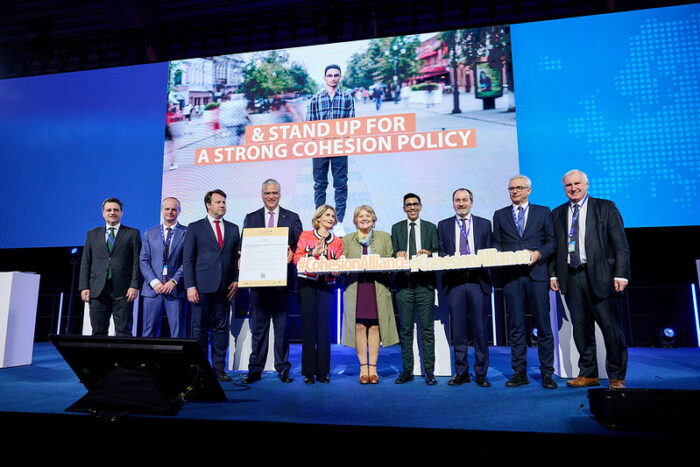The Progressive Post
Beyond dependent market capitalism: why Central Eastern Europe needs active industry and technology policies
The Eastern member states of the EU have seen impressive economic growth since joining the European Union. This is especially true for the Visegrád countries (Czech Republic, Slovakia, Poland and Hungary), but also, for example, for Slovenia, Romania or Lithuania. In almost all of the ‘accession countries’, the economic development was far better than predicted (or feared) at the time of EU accession.
The basis of this success was the integration of Central Eastern Europe into the industrial division of labour in Europe. The countries of the region assumed an important role in industrial subcontracting and manufacturing for international corporations, many of them from Germany. Today, Germany’s combined trade with the four Visegrád states is more important than its trade with any other economic partner, being it China, France or the US. A long-standing industrial tradition, low wages combined with a relatively high level of skills and education, good investment conditions and geographical proximity to the markets of Western Europe were important success factors. Today, the economies of Central Eastern Europe are highly industrialised ‘factory economies’ that are functioning in a symbiotic relationship with the ‘headquarter economies’ of the ‘old’ EU15.
However, this success story had its price: the economies of the region are characterised by a large share of foreign ownership, and a high resource and CO2 intensity of value creation. Analysts of capitalism have created their own category for this type of economy: they labelled it as ‘dependent market capitalism’, characterised by a high degree of control by foreign capital in both the production and financial sectors, a functionally subordinate role of domestic enterprises and a concentration on production functions with little influence on the decision making of the great firms that are active in these countries. Technological sovereignty and capacities are very limited. According to a recent study by the European Commission, only six of the 200 companies with the highest research and development expenditures in Europe are based in the accession countries.
After two decades of dynamic development, this ‘dependent’ growth model is now slowly running out of steam. The convergence with the industrial core economies in the EU is stagnating. True, the Visegrád countries have caught up with the Mediterranean EU countries. But compared to the leading ‘headquarter economies’ such as Germany, the Netherlands or the Scandinavian countries, the gap in per capita income has been not been shrinking for years now.
In order to change this situation and move further towards the levels and standards of living of their Western and Northern neighbours, the countries of Central Eastern Europe must find a new growth model. In the 21st century, the capacity to create and use technological innovation becomes ever more important for the economic performance of enterprises and countries. Hence, the countries of Central Eastern Europe must try to attract more knowledge- and know-how-intensive parts of the production process. And, even more important, they must start to harness their own ‘ecosystem’ of innovative domestic companies.
To follow this path, Central Eastern Europe must pursue an active industrial and innovation policy in a much more intensive form than in the past, when the impulses for innovation and technological modernisation were essentially set by the Foreign direct investment of Western corporations and companies. The countries of the region must begin to build up their own innovation systems and shift to a more know-how-driven growth model focusing on domestic enterprises that operate at the frontier of technological innovation. Under the rules of the internal market and the EU competition regime, this will be a challenging task. Investments in the education and training system, in automatisation, innovation and start-up support will play a crucial role here. Only in this way, the countries of Central Eastern Europe will succeed in closing the existing gap in terms of productivity and per capita income.
The Centre left parties of the region would be well advised to commit themselves to this process. It is the only way to satisfy the legitimate aspiration of the citizens of Central Eastern Europe to catch up with the West and finally fulfil the promise of socio-economic convergence within the EU. If they don’t do so, other political actors will.
Photo credits: VIZ UALNI/Shutterstock





